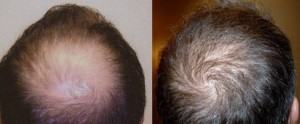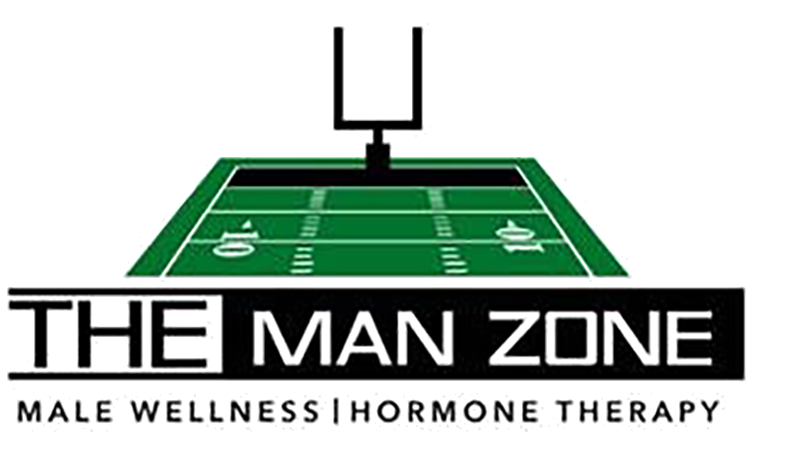As Heard On

 Hair loss affects 50% of men, and up to 30-40% of women. The specific cause of male pattern hair loss is unknown, and appears to result from multiple genetic factors as opposed to acquired infection or exposure to toxins in the environment. We now know that the tendency for hair loss may be inherited from either parent, and can affect both men and women (female pattern hair loss).
Hair loss affects 50% of men, and up to 30-40% of women. The specific cause of male pattern hair loss is unknown, and appears to result from multiple genetic factors as opposed to acquired infection or exposure to toxins in the environment. We now know that the tendency for hair loss may be inherited from either parent, and can affect both men and women (female pattern hair loss).
Occasionally, hair loss may be the result of trauma, infection, medication, or autoimmune dysfunction. In those situations the loss may be in an unusual pattern, may occur quickly over a short time, or may involve scarring in the bald scalp. These cases are generally referred for a dermatological evaluation prior to considering hair restoration.
Both male and female pattern hair loss tend to spare hair in the posterior scalp and lateral (sides) scalp. This hair is not “programmed to die” and therein lies the basis behind the hair transplant procedure. A tremendous amount of hair follicles can often be redistributed from the posterior scalp to the crown, midscalp, or anterior hairline, without any noticeable decrease in density at the donor site. These transplanted hairs retain their “programmed survival” and will not be lost in the future.
Male patients tend to lose hair in distinctive patterns (Norwood Classification). The goal of surgical hair restoration or hair transplant in these cases is to create a natural appearance resembling a less advanced hair loss pattern-or a full head of hair. Female patients tend to lose hair in a more diffuse pattern involving the midscalp, often sparing the hairline. For women the goal is to recreate as much central density as possible, often restoring a full appearance.
*Before and after photos and testimonials on this website are from actual patients who have given permission to have their photos/testimonials published. These photos and testimonials are for illustrative purposes only and no prediction of outcome is implied. Individual results may vary.
 Good candidates for surgical hair restoration or hair transplant include patients with relatively stable hair loss, good donor sites (generally in the back of the head or occiput), and realistic expectations. There is no absolute age limitation for hair transplant, but men over age 30 tend to have more stable loss, and often have a better idea of where their hair loss is heading.
Good candidates for surgical hair restoration or hair transplant include patients with relatively stable hair loss, good donor sites (generally in the back of the head or occiput), and realistic expectations. There is no absolute age limitation for hair transplant, but men over age 30 tend to have more stable loss, and often have a better idea of where their hair loss is heading.
Hair transplantation has evolved tremendously from the early days of “plugs,” and now involves transplanting the hair as “follicular units” or 1-4 hairs per graft, as opposed to “plugs” of 10-20 hairs. This allows for creation of a natural appearing frontal hairline. Hair may be harvested in one of two major ways: the strip technique, or follicular unit extraction (FUE).
 The strip procedure involves harvesting a strip of hair from the posterior scalp, and then meticulously dissecting the strip of hair into follicular units. The follicular units are then implanted in the intended areas which are previously marked to design an ideal and natural hairline. The donor site in the posterior scalp is closed with suture which is removed in approximately 10 days. The scar generally heals well, but will be visible if the hair is later cut very short, or if stretching or scar hypertrophy occurs. Patients may experience several days of pain in the region as the wound heals.
The strip procedure involves harvesting a strip of hair from the posterior scalp, and then meticulously dissecting the strip of hair into follicular units. The follicular units are then implanted in the intended areas which are previously marked to design an ideal and natural hairline. The donor site in the posterior scalp is closed with suture which is removed in approximately 10 days. The scar generally heals well, but will be visible if the hair is later cut very short, or if stretching or scar hypertrophy occurs. Patients may experience several days of pain in the region as the wound heals.
The FUE technique involves harvesting individual follicular units from the posterior scalp. There is no incision, and no need for suturing. Recovery is generally painless. Patients may later wear their hair in any style as there should be no visible scar. Follicular Unit Extraction is the most popular technique employed at our San Diego practice.
ARTAS® Robotic Hair Restoration in SAN DIEGO
Our La Jolla practice employs ARTAS® Robotic Hair Restoration – or automated follicular unit extraction. This revolutionary device uses suction to aid in gentle removal of the hair follicles. This allows for a quicker procedure, more grafts, and enhanced survival. Sessions typically involve 1500 to 2500 or more grafts, or 3000 to 5000 hairs. We are very excited to be among the first practices in San Diego to offer ARTAS® Robotic Hair Restoration.
The hair transplant procedure is performed under local anesthetic, with oral sedation or an intramuscular shot of anesthetic for patient comfort. No deep or general anesthesia is required. Patients should expect to spend most of the day in the clinic, and should have a light breakfast. Lunch will be served, and you may feel free to bring your own music if desired.
*Recovery from the procedure involves a gentle protective head wrap for one night, which is removed the following morning. Patients may then rinse with gentle lukewarm water. Most ARTAS® patients resume regular activities within 1-3 days, avoiding strenuous activity or excessive sweating. Mild crusting from the graft sites will disappear over 3-5 days, and the donor site should also completely heal during the first week.
*Transplanted hairs generally resume growth within 3 months and a full result is expected by 6- 12 months.
Dr. David trained in hair transplantation during a yearlong fellowship under Daniel Rousso, a former president of the International Society of Hair Restoration Surgery. He has been in practice in San Diego for over ten years, and is one of the first surgeons to bring ARTAS® Robotic Hair Restoration to La Jolla.
Risks of Hair Transplantation
*Risks of hair transplantation are relatively minor and include bleeding, infection, and scarring. With ARTAS® FUE hair restoration, these risks are very minimal, with no chance of a linear scar. Depending on the patient’s goals and available hair density for grafting, an additional session of transplantation may be planned after twelve months.
Call our La Jolla office today to learn more about
ARTAS® of San Diego: (858) 558-0595
We look forward to helping you achieve your goals!





